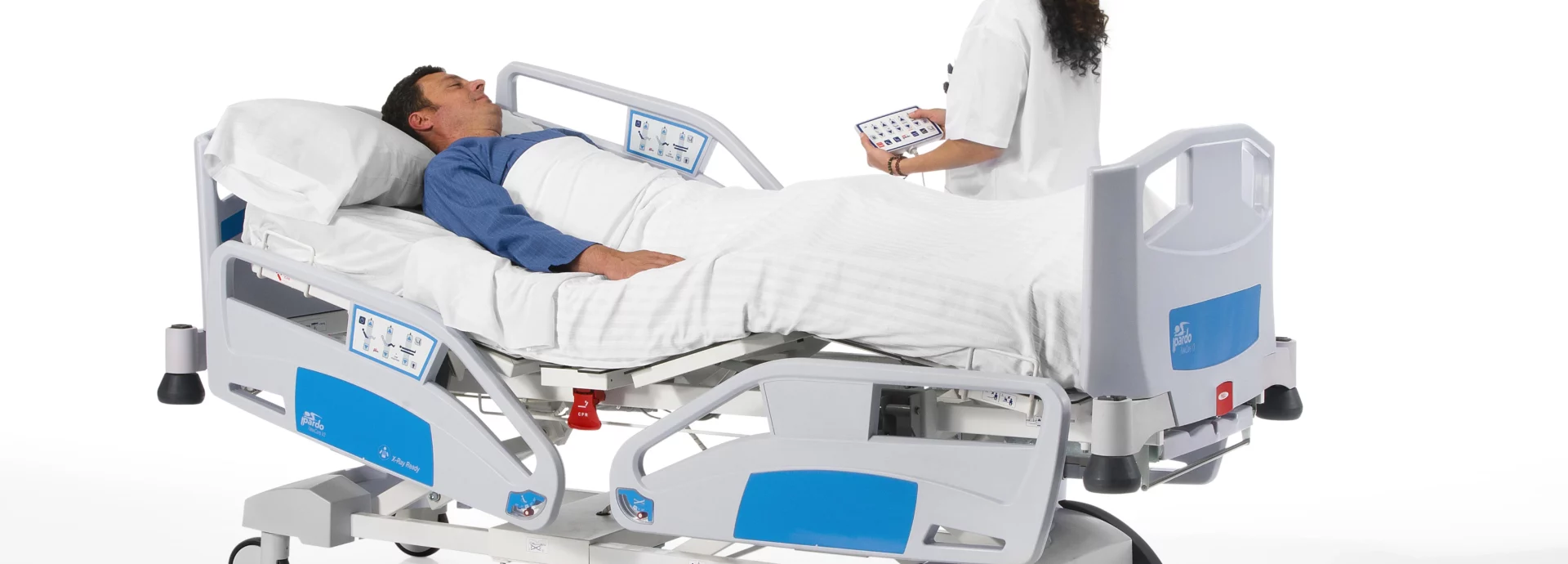Safe use of Bedrails
Posted on 9 March 2017 By Aaron Stretton

In This Article
Also referred to as side rails and cotsides, bedrails are used in almost every healthcare environment. They protect people from…
Also referred to as side rails and cotsides, bedrails are used in almost every healthcare environment. They protect people from falling out of bed, and split side rails offer support when standing and transferring to and from the bed itself. However, bedrails have been known to cause accidents and, in some cases, death. This is the risk involved when care facilities, hospitals, and hospices install ill-fitting side rails. Some risks are:
- the patient rolling or climbing over the top of the bed rail;
- possibly climbing over the footboard to avoid the bedrails;
- or even dislodging the rail due to vigorous shaking.
However, the biggest risk with side rails is the risk of entrapment. Patients can get their legs, arms, necks, and even their heads stuck in the gaps between side rails, which has spurred a stricter approach to hospital bed standards in recent legislation. There are certain qualities a bedrail must have to avoid these risks, and they must meet the standards set by the Medicines and Healthcare Products Regulatory Act (MHRA).
Integral side rails are best.
The majority of reported bedrail accidents have occurred due to the use of poorly fitted third-party side rails. This means that the side rails are not integral to the bed and have been manufactured to fit an array of divan and metal framed beds. This means that they probably do not fit properly. It is therefore advised to use integral bedrails that come built-in into the bed. These bedrails will have been specifically designed and built to provide safe usage for the user.
Bed grab handles are not classed as bedrails — these are used to aid mobility in bed and when transferring to and from bed. Grab handles and bars are not designed to stop users from falling out of bed.
Fitting side rails safely
Forside rails that are being fitted to beds, it’s particularly important that they fit the bed itself and that staff understand how to fit them correctly. A few things to look out for when fitting bed rails are:
- Are mounting clamps in the correct position and in good condition?
- Is there a gap between the lower bar of the rail and the top of the mattress, which could trap patients?
- Is there a gap between the rail and the mattress sides, headboard, or footboard that could cause entrapment?
- Is the bedrail securely fastened?
- Does the size of the mattress inhibit the effectiveness of the bedrail?
The MHRA advise against these things:
- Gaps over 60mm between the end of the bed rail and the headboard (which could trap the user’s neck).
- Gaps over 120mm from any accessible opening between the bedrail and the mattress platform.
- Do not use rails designed for a divan on a wooden or metal bedstead.
- Do not use poor fittings or designs that may allow the side rail to move away from the mattress and create a gap.
- Using bedrails with an easily-compressed mattress that could allow gaps to form.
Things to consider when buying
If you’re looking for profiling beds, then these mostly have side railsils built-in. But it is important to bear in mind who will be using the bed. For example, a child will have different needs from an adult, and accordingly, the bedrails should not put the child at risk. The bed rails should also comply with the MHRA and IEC/EN 60601-2-52.
One of the best alternatives to traditional built-in side rails is mesh panels. These are more aesthetically appealing than the usual rigid metal models and give the individual the ability to see through them. The Liberta bed has mesh courtesy panels that will prevent the user from falling out of bed, and they can support the weight of the individual when transferring.
Using mattress overlays
Mattress overlays are a popular choice when preventing pressure injuries and ulcers. It is incredibly important to consider the ways that the dimensions of the mattress will change. The height of the mattress will increase, and therefore, it will be easier to roll over the top of the side rail. The soft overlay may also create a gap between the side of the mattress and the bed rail, which presents a risk of entrapment.
If the standard mattress is being replaced altogether and a lightweight foam or air mattress is being used instead, this could jeopardise the entire structure and stability of the side rails— particularly third-party options. The side rails may rely on the weight of the mattress to keep them in place, and with a foam or air mattress being much lighter, the side rails could simply tip off the bed.
These are just a few things to consider when looking at the safe usage of bedrails, but there are a multitude of other factors to think about as well. We highly recommend printing out and reading through the MHRA report to truly familiarise yourself with the guidelines for fitting bed rails. We also have a Bed Siderail Checking Tool that you can download for free!
We think you might also be interested in...
Related Products
Speak to The Experts
Need assistance with product enquiries, general inquiries, or product support? Our Phonelines are open 9am - 5pm Monday to Friday
0113 519 0319
Or, fill out the form for a call back.



